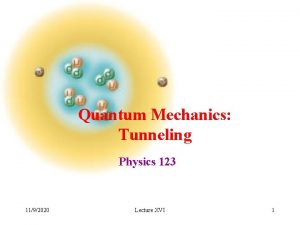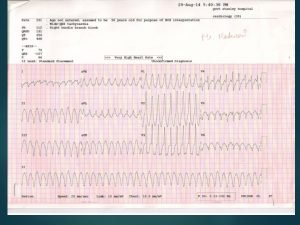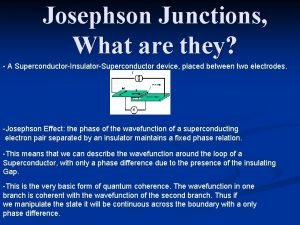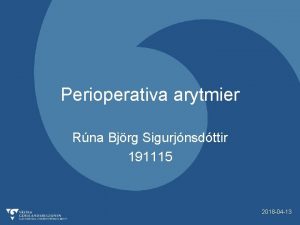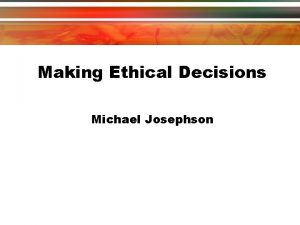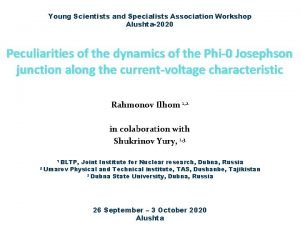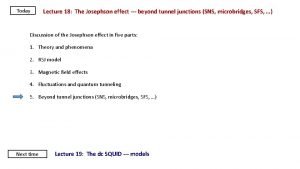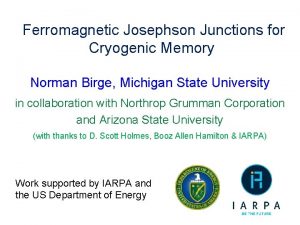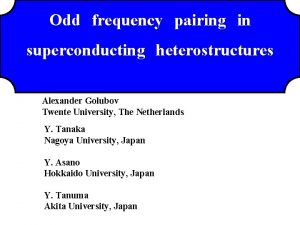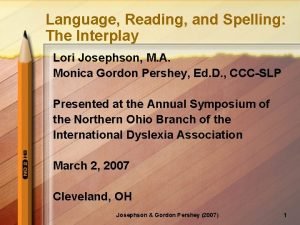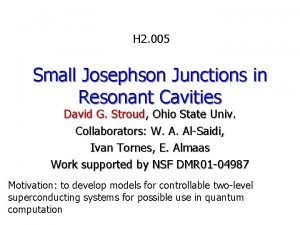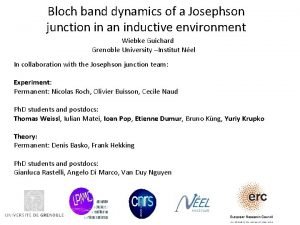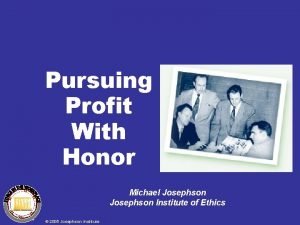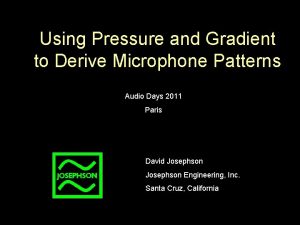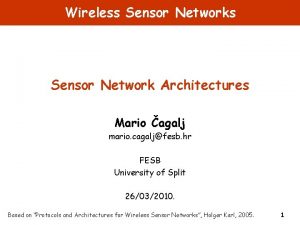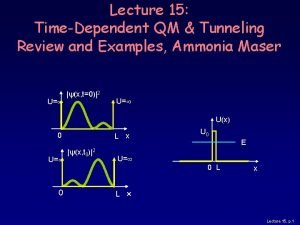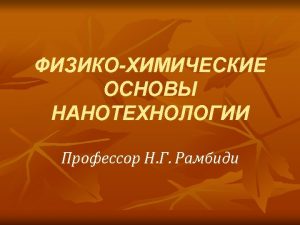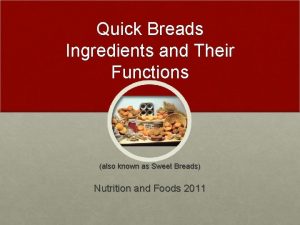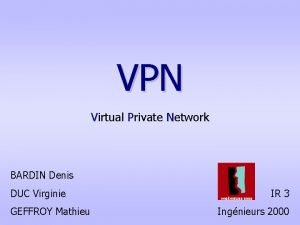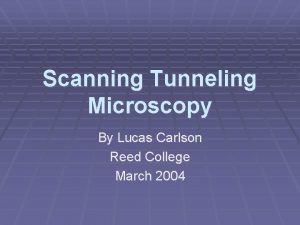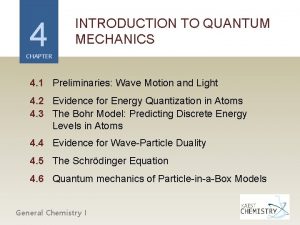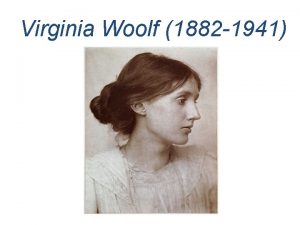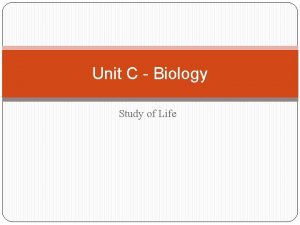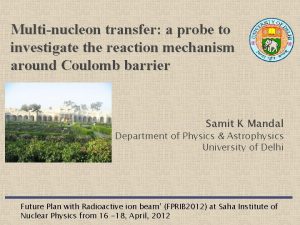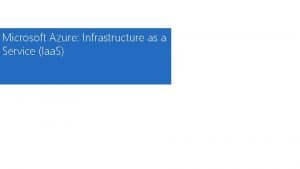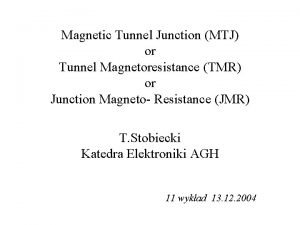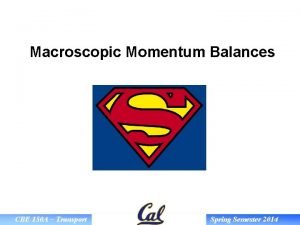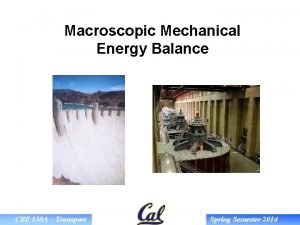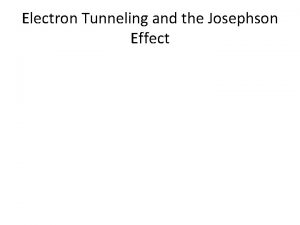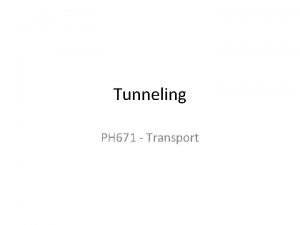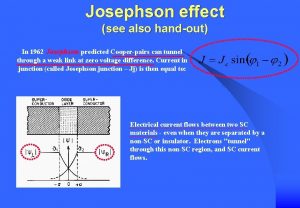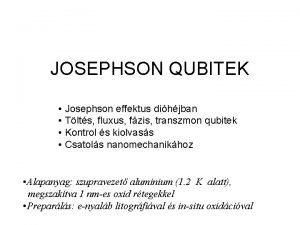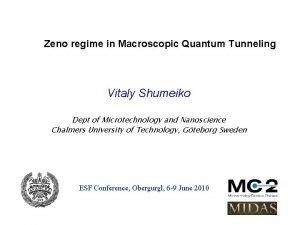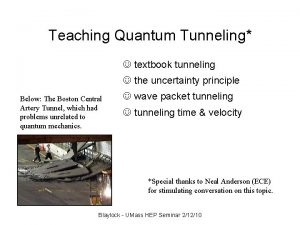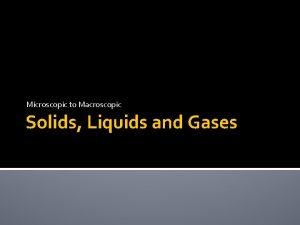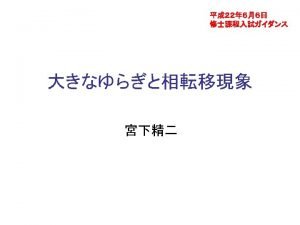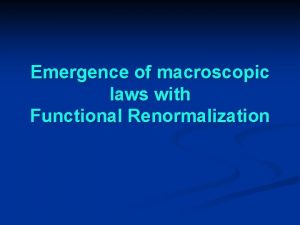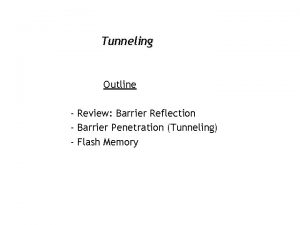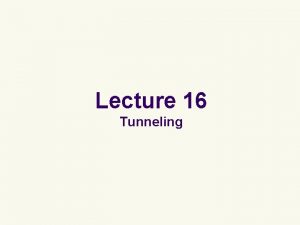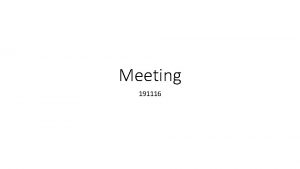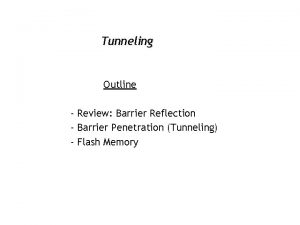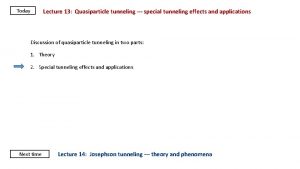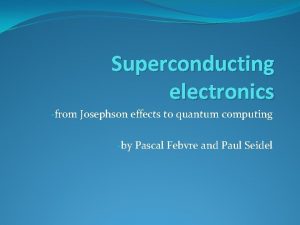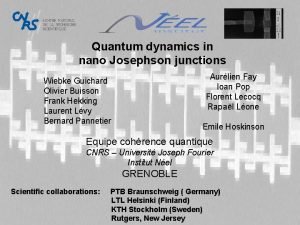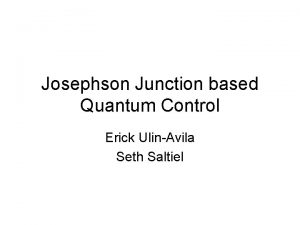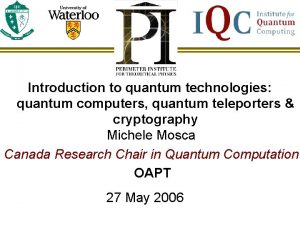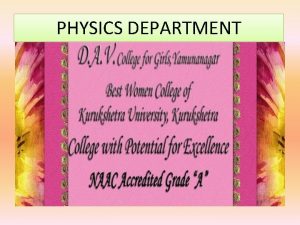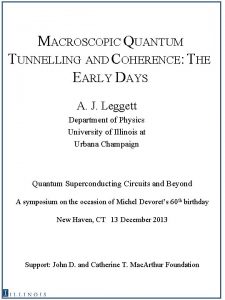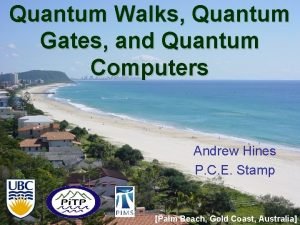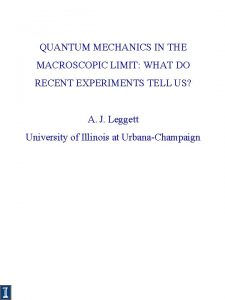Introduction to Josephson Tunneling and Macroscopic Quantum Tunneling































- Slides: 31

Introduction to Josephson Tunneling and Macroscopic Quantum Tunneling Marc Manheimer November 5, 1999

Outline • • Review of Josephson Tunneling. Derivation of tilted washboard potential. Thermal lifetime (Fulton & Dunkleberger). Macroscopic Quantum Tunneling (Voss&Webb). • More recent work. November 5, 1999

Basic Tunnel Junction NIN Tunneling i v November 5, 1999

NIS Tunneling November 5, 1999

SIS Tunneling November 5, 1999

SIS Tunneling • No current flows at T=0 until the gap voltage is exceeded. • It takes 2 D 1 to break a Cooper pair, and leave it at the Fermi level, and another 2 D 2 to bring it to the conduction band in the second metal. (D 1+D 2 per electron) • The tunneling current is given by: November 5, 1999

The Wavefunction • The superconducting condensate is described by a Schrodinger equation, with wavefunction: • The phase of the wavefunction plays an important role in Josephson tunneling. November 5, 1999

Josephson Tunneling • In 1962, Josephson predicted. . . – A zero voltage super current: – An evolving phase difference, if a voltage is maintained across a junction: Metal 1 November 5, 1999 Oxide barrier Metal 2

Simple Derivation… Couple two superconductors… Separate real and imaginary… Impose a voltage between the two superconductors… Substitute the pair density… November 5, 1999 We get Josephson’s relationships with:

November 5, 1999

Josephson Energy • One can derive the coupling free energy stored in the junction by integrating the electrical work done by a current source in changing the phase: • With a convenient reference for f: November 5, 1999

Tilted Washboard Potential I RSJ Model + i v _ November 5, 1999 Icsinq R C

Tilted Washboard Potential II The Potential November 5, 1999

Tilted Washboard Potential III Mechanical Analogue q G mg November 5, 1999

November 5, 1999

November 5, 1999

Fulton &Dunkleberger Measured the effect of thermal noise on the lifetime of the zero voltage state. They scanned junction current, lowering the potential barrier, until the junction made the transition into the finite voltage state. The thermal lifetime is given by: The probability of switching to the finite voltage state is: November 5, 1999

Fulton & Dunkleberger November 5, 1999 H(K)

November 5, 1999

Desired System Properties for QMT • Metastable state separted from a continuum. • Two macroscopically distinguishable states. • Frequency of small oscillations high enough that • Barrier height variable. • Experimentally describable in classical terms. November 5, 1999

Voss & Webb • Verify thermal switching at high T • As T® 0, the switching rate becomes dominated by quantum tunneling. Caldeira and Leggett fix the parameters, at T=0. November 5, 1999

Misc Parameters For Voss & Webb: For Fulton & Dunkleberger: November 5, 1999 Ic=1. 6 m. A Ic=160 n. A 2 x 1011 sec-1 7 x 1010 sec-1 3. 2 x 10 -3 e. V 3. 2 x 10 -4 e. V ~35 K ~3. 5 K

Voss & Webb An interesting aside, is that V&W write the barrier as: Also, V&W determined x=I/Ic by fitting to the exponential. November 5, 1999

Voss & Webb w/o zero point subtraction Incl zero point subtraction November 5, 1999

Voss & Webb November 5, 1999

Note: Curves change with T in MQT regime, as Ic continues to change. November 5, 1999

November 5, 1999

November 5, 1999

Finite Temperature MQT • Subsequnt to V&W, several groups developed a finite T model. • MQT increases with T. • Washburn, Webb, Voss & Faris, published a follow-on which verifies predictions. PRL 54, p 2712 (1985). • Groups at Berkeley and SUNY/SB also verified predictions. November 5, 1999

WWV&F November 5, 1999

WWV&F November 5, 1999
 Tunneling
Tunneling Vereckei algorithm
Vereckei algorithm Josephson devices
Josephson devices Josephson sign
Josephson sign Michael josephson ethics
Michael josephson ethics Josephson junction
Josephson junction Josephson junction
Josephson junction Norman birge
Norman birge Alexander golubov
Alexander golubov Marvin josephson
Marvin josephson Josephson junctions
Josephson junctions Josephson effect
Josephson effect Josephson institute of ethics
Josephson institute of ethics Josephson c700s
Josephson c700s Classical mechanics
Classical mechanics Quantum physics vs quantum mechanics
Quantum physics vs quantum mechanics Wsn tunneling
Wsn tunneling Qm tunneling
Qm tunneling Define scanning tunneling microscope
Define scanning tunneling microscope Classification of quick bread
Classification of quick bread Denis bardin
Denis bardin Scanning tunneling microscope history
Scanning tunneling microscope history Vpn tunneling
Vpn tunneling Iodine dns tunnel tutorial
Iodine dns tunnel tutorial Scanning tunneling microscope
Scanning tunneling microscope Tunneling technique woolf
Tunneling technique woolf Scanning tunneling microscope
Scanning tunneling microscope Tunneling effect
Tunneling effect Azure forced tunneling
Azure forced tunneling Mtj tmr
Mtj tmr Cbe 150
Cbe 150 Macroscopic mechanical energy
Macroscopic mechanical energy
